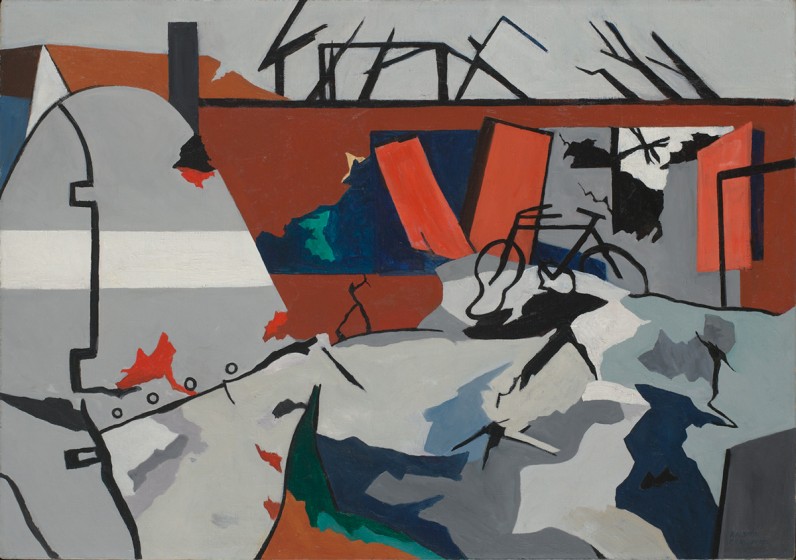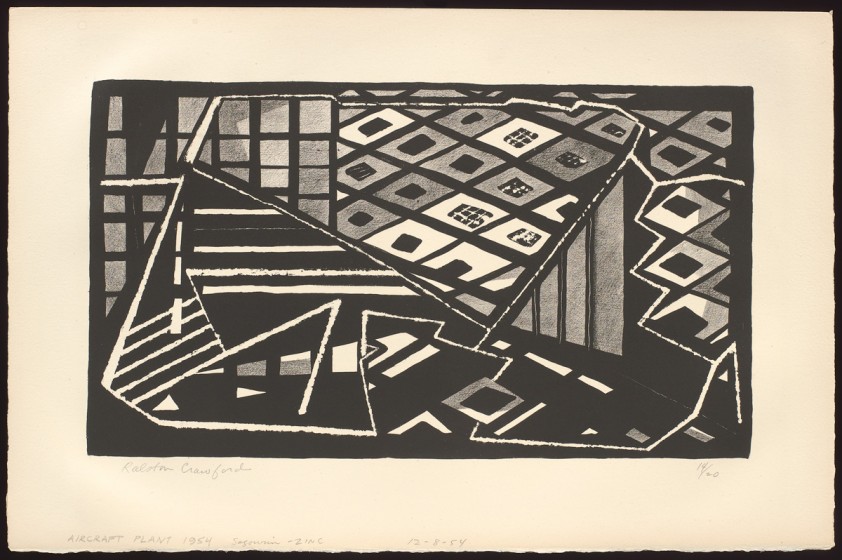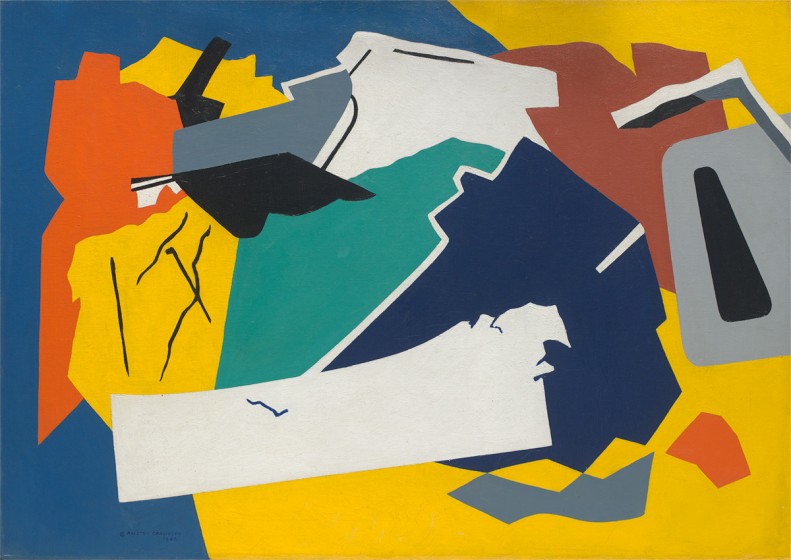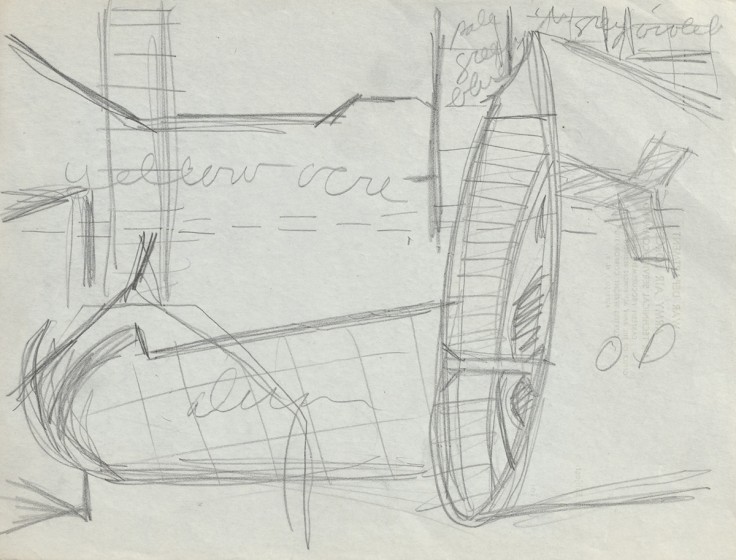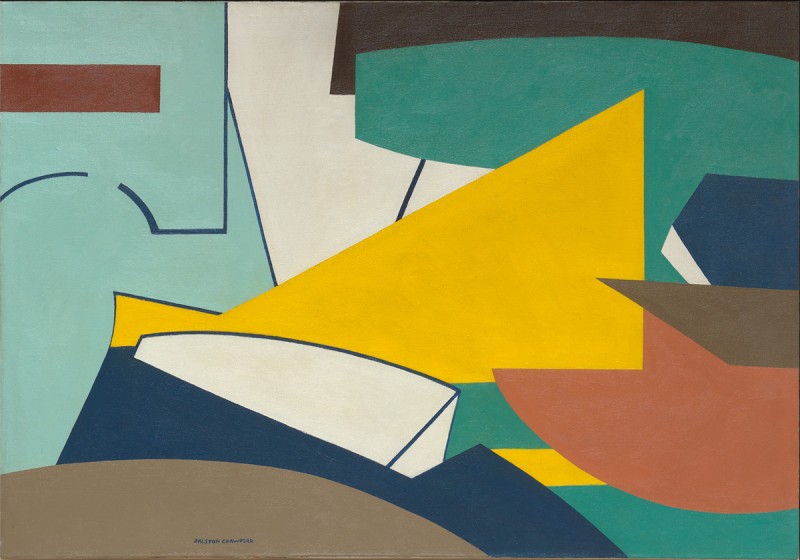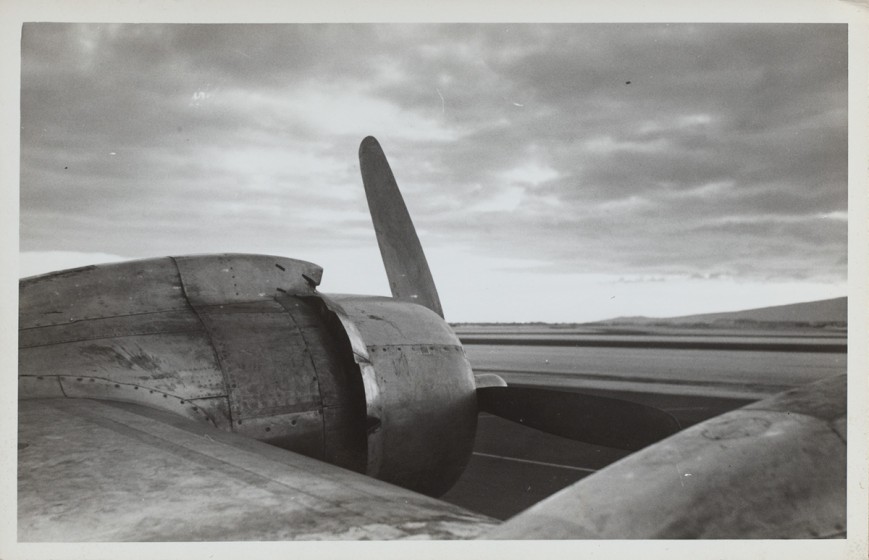Ralston Crawford’s art underwent a dramatic evolution in the 1940s influenced by aviation—from his personal experiences in flight, to his exposure to the construction of airplanes and the destruction they wrought in the war.
Crawford served in the Weather Division of the Army Air Force and continued working as an artist through the War—receiving a commission to paint the Curtiss-Wright Aircraft Plant in Buffalo and an assignment to observe and record the atomic bomb tests at Bikini Atoll. These experiences had a profound impact on Crawford and marked a major turning point in his life and art. The Vilcek Foundation has amassed the most significant collection of this material extant: forty-eight paintings, photographs, and drawings. Examining these works provides insight into the role aviation played in the shift that occurred in the “nature of construction” of Crawford’s art.
In the Army, Crawford created pictorial representations of weather patterns for airplane pilots and was exposed to “endless plan tragedies,” which he recorded in works like Bomber, 1944 (Vilcek Collection) and Air War, 1944 (Harvard Art Museums). These powerful images of chaos and devastation were followed by ordered and precise paintings of airplane assembly. In December 1944, Crawford received a commission from Burton Tremaine, President and Chairman of the Miller Lighting Company, to commemorate the installation of nine mils of continuous fluorescent lighting in the Curtiss-Wright Aircraft Plant. Crawford found the commission “stimulating” and spent three days in the Buffalo facility photographing and sketching. The visit gave him “quite a jolt emotionally and endless ideas,” which resulted in multiple related paintings, including Factory with Yellow Center Shape, ca. 1947 (Vilcek Collection).
In the midst of creating these images of construction (albeit of a tool of destruction—the Curtiss-Wright plant in Buffalo manufactured P-40 Warhawk fighters), Fortune magazine sent Crawford on assignment to witness and document the atomic bomb test at Bikini Atoll on July 1, 1946. Crawford’s relationship with Fortune began in 1944, and he created cover illustrations and charts related to weather, flight, and radar for several issues. He captured his impressions of the “moral and physical” destruction in drawings and paintings including Bikini, Tour of Inspection (Vilcek Collection) and Test Able (University of Georgia), both 1946.
The evolution of many of these works can be traced from photograph and drawing to the finished painting, revealing Crawford’s decisions about form and space, which were informed by his experiences with airplanes and flight. For Crawford, the War “developed rather than changed” his style, allowing him the means to express “highly abstract concepts” pictorially. He felt his work was “a fuller thing,” due in part to the sensory reactions he experienced in flight, “the practically complete destruction of space and time became more than an idea to me. I perceived it through my own sense from the nose of a B-25 (non-combat).” This novel perception gave Crawford a freedom of expression that would inform his work for the next three decades.
A scholarly catalogue published by Merrell accompanied the exhibition and feature guest authors Amanda Burdan (Brandywine curator), Emily Schuchardt Navratil (Vilcek curator), Jerry Smith (Dayton Art Institute chief curator), and John Crawford.
Ralston Crawford: Air + Space + War was organized by the Vilcek Foundation in collaboration with the Brandywine River Museum of Art and Dayton Art Institute.
Videos
Ralston Crawford: Air + Space + War presentation at the Brandywine is supported locally by donors to the Brandywine River Museum of Art Exhibition Fund, including the Wyeth Foundation for American Art, Davenport Family Foundation, William C. and Laura Buck, Ms. Mary Graham, Mr. and Mrs. Anson McC. Beard Jr., Mr. and Mrs. Robert V. Duprey/Hamilton Family Foundation, Mr. and Mrs. Michael R. Matz, Dr. and Mrs. John Fawcett, and Morris & Boo Stroud.
